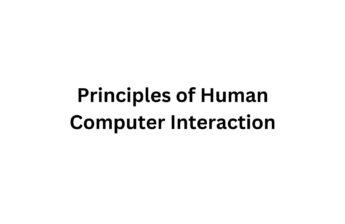Human-Computer Interaction (HCI) is the field of study that focuses on how humans and computers interact with each other. HCI professionals strive to design computer systems that are not only functional but also usable, efficient, enjoyable, and safe for people of all abilities to use.
In today’s world, where technology is integrated into nearly every aspect of our lives, HCI has become more important than ever. Well-designed interfaces can help us be more productive and efficient, while poorly designed ones can lead to frustration and errors. In some critical systems, like medical devices or airplane cockpits, bad HCI design can even pose safety risks.
Read more about human computer interaction.
Best Human Computer Interaction Books
If you are looking for the best human computer interaction books, you are in the right place. At SocialComputingJournal.com, we have come up with this post to help you select the best book for yourself. Here are some of the best HCI Books.
Top HCI Books for Beginners
Don’t Make Me Think, revisited: A Common-Sense Approach to Web Usability: by Steve Krug: This classic book provides a practical guide to web usability, with a focus on making websites clear and easy to use.
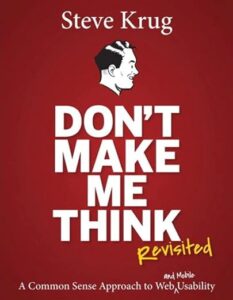
Designing with the Mind in Mind: Simple Guide to Understanding User Interface Design Rules: by Jeff Johnson: This book offers a clear and concise introduction to the principles of user interface (UI) design.
The Design of Everyday Things: by Donald Norman: This influential book explores the psychology of design and how to create products that are usable and enjoyable.
Top HCI Books for Intermediate Learners
About Face: The Essentials of Interaction Design: by Alan Cooper: This comprehensive book covers all aspects of interaction design, from user research to prototyping and testing.
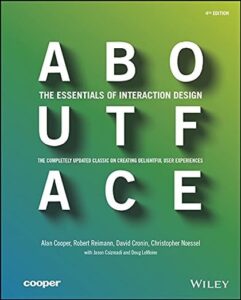
Interaction Design: Beyond Human-Computer Interaction: by Helen Sharp: This book takes a more theoretical approach to HCI, exploring the foundations of interaction design and the future of HCI.
Learning UX Design: A Practical Guide for Designing User Experiences: by Jennifer Preece, Yvonne Rogers, and Helen Sharp: This book provides a comprehensive introduction to user experience (UX) design, covering all the stages of the UX design process.
Top HCI Books for Advanced Learners
Human-Computer Interaction: by Alan Dix, Janet Finlay, Gregory Abowd, and Russell Beale: This is a classic textbook that covers all the major topics in HCI, from the foundations to the latest research.

Research Methods in Human-Computer Interaction: by Jonathan Lazar, Jinjuan Feng, and Helen Sharp: This book provides a comprehensive guide to conducting HCI research, including user research methods, data analysis, and evaluation methods.
Designing the User Interface: Strategies for Effective Human-Computer Interaction: by Ben Shneiderman: This book is another classic text that covers the design of user interfaces, with a focus on making them efficient, effective, and satisfying to use.
The Design of Everyday Things by Donald A. Norman
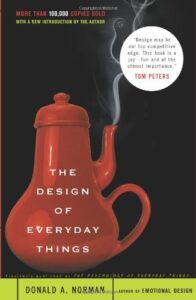
Everyday frustrations with poorly designed products aren’t a user problem, but a design problem, argues Don Norman in his book “The Design of Everyday Things.” Common issues include unclear controls, illogical layouts, and lack of feedback. Norman proposes a user-centered approach to design, where products are intuitive and follow principles of cognitive psychology. By prioritizing user needs and clear communication between product and user, design can become effortless and frustration-free.
Where the Action Is: The Foundations of Embodied Interaction by Paul Dourish

Despite its success as an engineering discipline, computer science also grapples with philosophical questions about how it represents the world. In his book, Paul Dourish explores this concept through “embodied interaction,” where human interaction with software is viewed as a skilled practice rather than pure logic. This approach aligns with the ideas of phenomenology, a philosophical school that emphasizes the importance of experience in understanding the world. Dourish argues that this perspective can be used to design future interactive systems that better reflect the way people naturally interact with their surroundings.
Universal Principles of Design
William Lidwell, Kritina Holden, Jill Butler
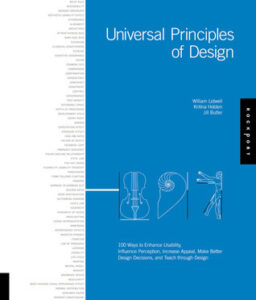
Designers across various fields, from marketing to engineering, require knowledge from many disciplines to create successful designs. “Universal Principles of Design” fills this gap by being the first comprehensive reference that compiles 100 key design concepts. Easy to understand explanations and practical examples make this book a valuable resource for anyone looking to improve their design expertise.
Observing the User Experience: A Practitioner’s Guide to User Research by Mike Kuniavsky
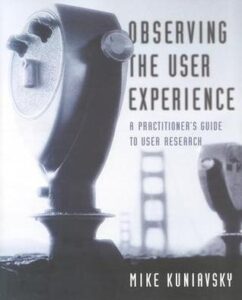
Designers and developers often misunderstand their users’ needs. This book, “Observing the User Experience”, bridges that gap by providing practical techniques for user research. It covers 13 methods to understand what users want and how they interact with products. These techniques are designed for the real world, considering time and budget constraints. By following this guide, anyone involved in product development can gain valuable user insights to create successful products.
Inspired: How to Create Tech Products Customers Love by Marty Cagan
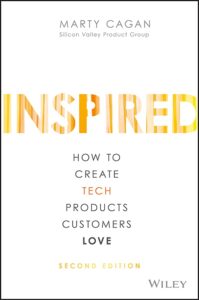
Successful tech companies like Amazon and Google prioritize building strong product organizations. Marty Cagan’s book “INSPIRED” offers a guide for structuring and staffing such teams. It covers finding the right people, developing effective processes, and fostering a positive product culture. Whether you’re a startup or an established company, “INSPIRED” provides valuable insights to improve your product development efforts and create customer-loved products.
Hooked: How to Build Habit-Forming Products by Nir Eyal
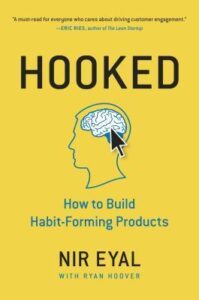
Nir Eyal’s book “Hooked” explores why some products become ingrained in our daily routines. Eyal argues that successful companies use a four-step “Hook Model” to subtly nudge users to keep coming back. This model creates cycles of anticipation, action, reward, and investment, ultimately forming habits without relying on heavy marketing. Eyal offers practical steps and case studies to help product developers, marketers, and anyone interested in influencing user behavior understand how to build products that users love and can’t put down.
About Face: The Essentials of Interaction Design by
Alan Cooper, Robert Reimann, David Cronin

“About Face: The Essentials of Interaction Design” is a comprehensive guide that has been updated for the mobile age. This new edition includes information on mobile apps, touch interfaces, and designing for smaller screens. It also reflects the growing importance of design in today’s business world, where consumers expect user-friendly websites, apps, and devices. The book offers designers and developers updated methods and best practices to stay relevant in the ever-changing world of technology.
Conclusion
Human-Computer Interaction (HCI) books offer a valuable resource for anyone who wants to learn more about designing usable and enjoyable computer systems. Whether you’re a beginner interested in the basics of web usability or an experienced professional looking to stay up-to-date on the latest research, there’s an HCI book out there for you. By delving into the world of HCI, you can gain the knowledge and skills necessary to create technology that not only works but also empowers and delights its users. So, explore the books mentioned here, delve deeper into the field of HCI, and be a part of shaping the future of human-computer interaction.






